How to Get Rid of Moles in Your Grass
One morning you wake up and see your garden or lawn is covered in volcano-shaped dirt piles. Obviously, you have an animal who is traversing your property looking for a bite to eat. That's when you probably start wondering about how to get rid of moles.
Moles aren't rodents, despite what you may have heard. They're insectivores that tunnel and live underground. They love earthworms, grubs, and other insects in the soil – which is why they're attracted to your garden.
It's easy to spot mole tunnels. Moles leave a trail of raised earth as they burrow beneath the ground. Their tunnels often kill the roots of the grass in your lawn or kill your vegetable seedlings. Those soft tunnels may be dangerous for livestock or make it hard to drive a tractor or mower through the field.
Getting rid of moles can be a lot harder than playing Whack-A-Mole at the arcade. For such a small critter, they can tunnel 18 feet per hour. Here are 10 ideas to help you rid your garden of these pests – and what not to do.
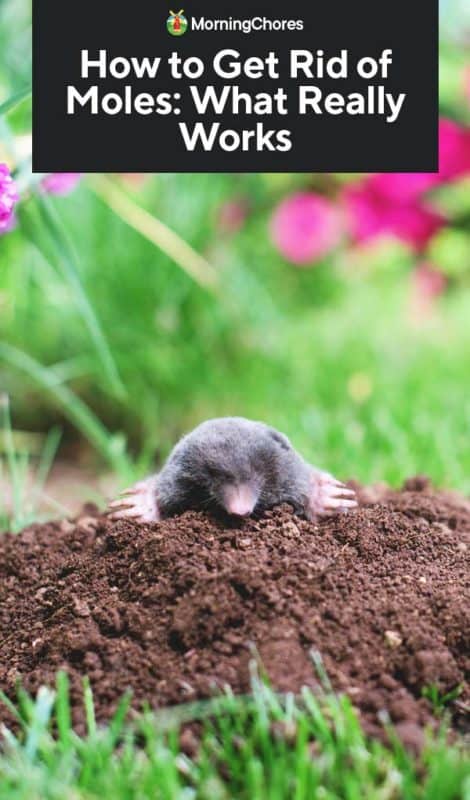
What Are Moles?
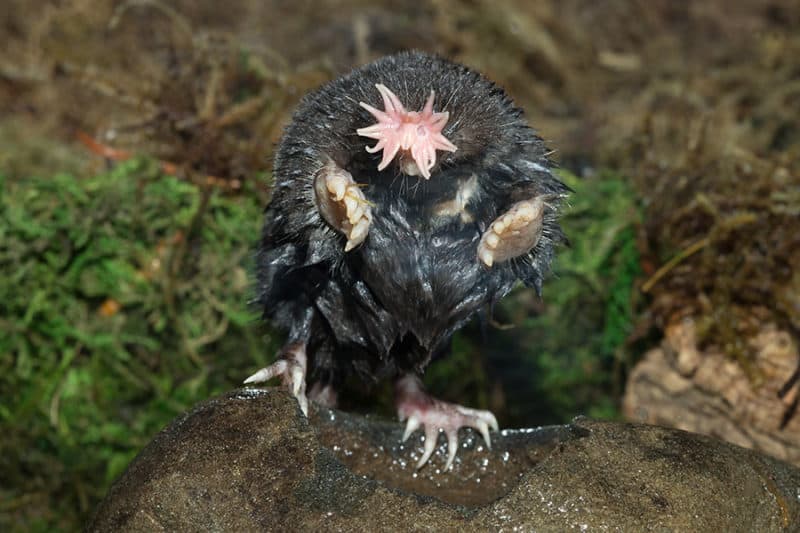
Moles are insectivores that live underground. They have poor eyesight and don't function well above ground. They grow to be about 6-8 inches long, have a long snout with whiskers and small eyes and ears. You can tell a mole by their large flat front feet and long claws which are perfect for digging.
The good news is that moles are relatively solitary and don't live in large communities as mice do. Moles come together during the breeding season in the early spring and babies stay with their mother for two months before tunneling off on their own.
Don't confuse moles with gophers. Gophers build fan-shaped mounds in the yard, which marks their home base.
Are Moles Always a Bad Thing?
Moles do have a positive side. They aerate the soil and eat many garden pests, including white grubs such as chafers and Japanese beetle larvae, slugs, millipedes, and snails. They have a voracious appetite and eat 80% of their body weight each day.
Moles don't eat your plants, although the digging can cause damage to root systems. If you're shooting for a nice, manicured lawn their tunnels may make you cringe.
In the early 1900s, mole fur was the rage in Great Britain. Even today, in some places, moles' smooth, velvety fur is used to make coats. Since the animals are small, it takes up to 500 of them to make a coat.
You can look at your mole invasion in a positive light. If you have moles it means you have nice rich moist soil that is nourishing lots of invertebrate life. You might let them be if it's in an area where they aren't causing much harm.
Understand Mole Tunneling
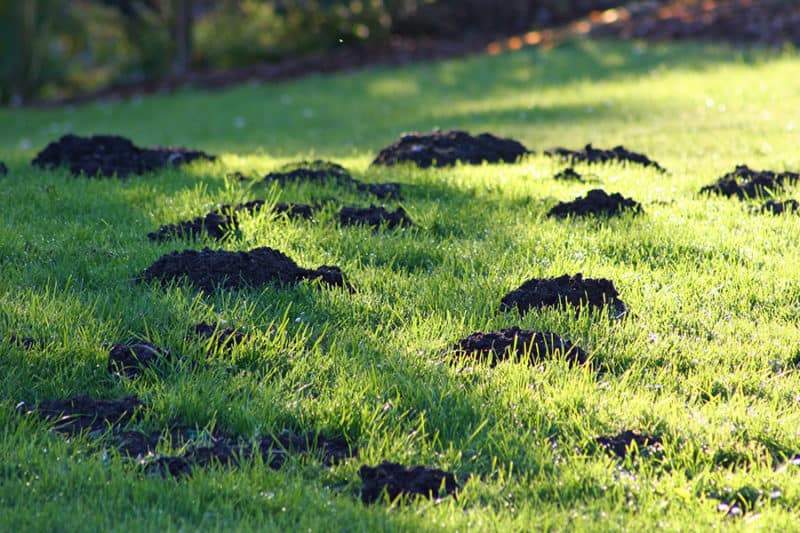
In order to get rid of moles, you need to understand their tunneling habits. Moles have a network of main tunnels about 12-inches below the surface of the ground. These networks contain food storage, sleeping, and bathroom areas.
The tunnels that we see going through our garden or yard are feeding tunnels, which the moles may use once or multiple times. Moles create surface tunnels during the spring and fall and during particularly wet times. That's because they follow earthworms, and worms move toward the surface during these times.
The best way to rid yourself of the moles is to target those deeper tunnels where the moles live. They don't come to the surface often, so you need to go underground to deal with them.
How to Get Rid of Moles
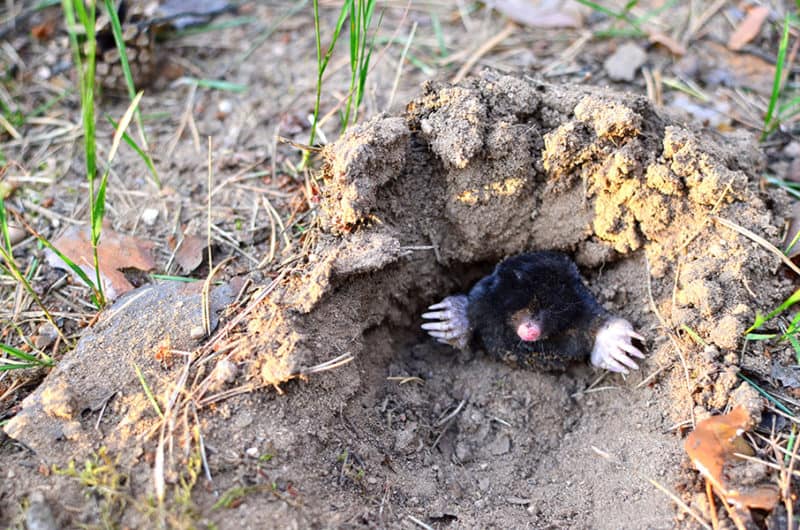
The mole lives in your garden and lawn, so you don't want to put harmful chemicals on the soil that would kill the moles but would also harm earthworms, beneficial bacteria, and your health. Instead, there are many other strategies you can use to get rid of those pesky beasts.
1. Traps
Trapping moles is often the most effective strategy as it doesn't endanger your garden. For a humane option, you can purchase live traps that don't kill the mole. You can relocate them instead.
Spring traps such as the Victor Plunger Style Mole Trap are easy to install and monitor. You set them right over the tunnel and they catch and kill the pest. These kill the mole onsite, so you have to remove them and dispose of the body.
2. Noise and Vibration
Moles are sensitive to loud noises. Having windchimes or a radio in your garden could make it unattractive to moles.
Moles are also uncomfortable with vibration. Lehman's Hardware store makes a Mole Chasing Windmill that sends vibrations through the ground. This is a humane option that also tells you which way the wind is coming from. The vibrations only cover a diameter of 75-feet, so you may need more than one.
Ultrasonic sound waves such as those used in solar in the ground sonic repellents have mixed reviews. They use high-frequency pitches (which the humans can't hear) to scare away rodents and other pests.
The downside is they have a short-range and depending on the frequency they can be heard by birds, including your chickens. Make sure you buy one that is made to not harm your birds or pets.
3. Fencing and Natural Barriers
This method is more expensive and labor-intensive. However, it keeps other digging pests out as well. If you have moles, groundhogs, gophers or chipmunks, fencing is a good option. Bury hardware mesh below the surface of your soil to a depth of 36-inches.
You can also make a natural barrier, such as a gravel path around your garden. Dig a trench at least a foot wide and three feet deep. Fill the trench with gravel. The gravel makes a barrier that the mole can't dig through, though if you don't go deep enough, they'll just go under it.
4. Bait
While you don't want to spray your entire garden with chemicals, a few well-placed baits can help eliminate your mole problem. The best option is worm-shaped baits containing Bromethalin. Since moles primarily eat earthworms, this is one of the most reliable ways to target them.
5. Composting
Composting has many benefits for your garden, including attracting moles. Your compost pile is probably a smorgasbord of mole favorites – earthworms – and they may head straight for the compost and ignore the garden altogether.
6. Repellent Plants
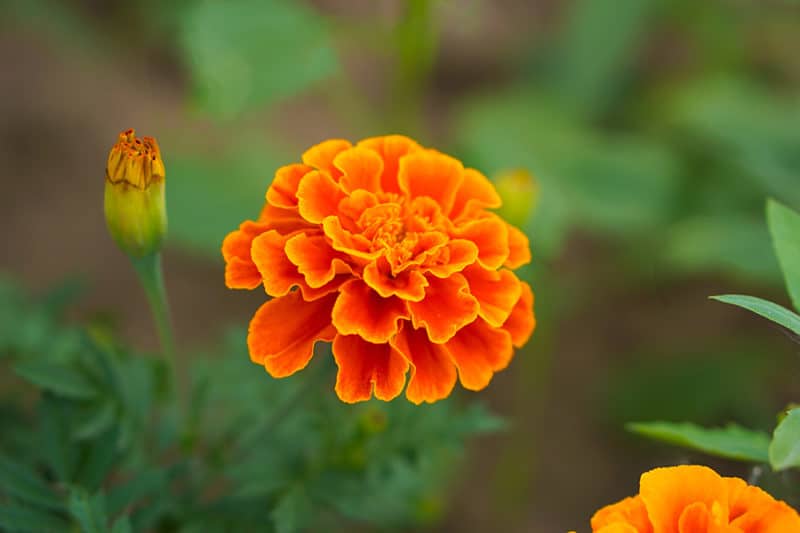
Moles are repelled by certain plants. You can strategically plant them around your garden and lawn to keep moles away. One big advantage is that many of the plants that moles hate look beautiful in your landscape.
The best plants are:
- Crown imperial
- Marigolds
- Narcissus
- Fritillaria
- Allium family
- Castor bean (this one is also poisonous to children and pets)
In addition, using essential oils such as eucalyptus or mint oil can help deter moles. Soak cotton balls in the oil and place them underground in the mole's tunnels.
7. Coffee grounds
Moles don't like a morning cup of Joe. Burying coffee in their tunnels sends them scurrying. The challenge with this method is that you have to target every single exit and entrance hole that the moles use. If you don't, they'll just work around your attempts.
8. Predators
Your cat is a predator and a hunter and can be enlisted in your fight against moles. Your neighborhood fox is also a large eater of small mammals, so encourage them to hang around.
9. Oil Sprays
You can purchase a premixed commercial mole repellent or you can make your own. Castor oil is a popular pest deterrent. It won't kill the moles but it causes them to have a bellyache. This may force them to reconsider your lawn or garden as fine dining.
Mix three tablespoons of castor oil and one tablespoon of dish soap in a gallon sprayer. Add one gallon of water. Spray the mixture on the ground along the tunnels and especially where you see exit/entry holes. You can also change this recipe up and use Murphy's Oil instead of dish soap. Adding a teaspoon of cayenne pepper is said to increase efficiency.
10. Beneficial Nematodes
Try introducing beneficial nematodes to your lawn or garden. They'll consume the food sources that the moles are attracted to. Gardens Alive offers a nematode variety targeted at moles.
What Not to Do
There are a lot of old wives' tales floating around about how to get rid of moles. Don't believe them all. Studies have shown that many don't work.
For instance, Juicy Fruit gum won't kill them. Not only will mothballs not kill moles but the chemicals they contain, Naphthalene and paradichlorobenzene, are considered hazardous to your health. Human hair, broken glass, and rose branches are all useless. And burying pet waste? Forget about it.
Take Away
Moles can be a real problem in your garden but the good news is there are many ways to combat them. You can try one or several of the ideas and find out which one works best for you.
Was this article helpful?
Yes No
How to Get Rid of Moles in Your Grass
Source: https://morningchores.com/how-to-get-rid-of-moles/